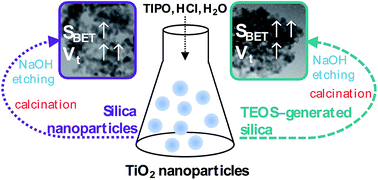Scaffold-assisted synthesis of crystalline mesoporous titania materials†
Abstract
This work explores the scaffold-assisted synthesis of titania materials, in which the scaffold protects the titania's mesostructure during the calcination-induced crystallization that normally leads to its collapse. Two scaffold materials were examined: silica and alumina. The scaffolds were delivered either: (1) in the form of nanoparticles: Nanosol 3014D colloidal silica or Catapal A boehmite; or (2) through hydrolysis and condensation of suitable precursors: tetraethyl orthosilicate or aluminum isopropoxide. Titania was prepared by hydrolysis and condensation of titanium isopropoxide under acidic conditions, resulting in 4–8 nm TiO2 nanoparticles aggregated into mesoporous structures. Incorporation of even 10 wt% of the scaffold resulted in a substantial improvement of the structural properties and the higher scaffold amounts yielded even better results. It is shown that the structural properties of titania depend on the scaffold's structure: the nanoparticle-composed scaffolds are condensed and more suitable for development of large pore volume, whereas the precursor-generated scaffolds are more dispersed and better for achieving titania with large surface area. The final titania materials are crystalline (almost or exclusively anatase phase, depending on the scaffold) and possess a specific surface area reaching 260 m2 g−1 and pore volume reaching 0.60 cm3 g−1.


 Please wait while we load your content...
Please wait while we load your content...